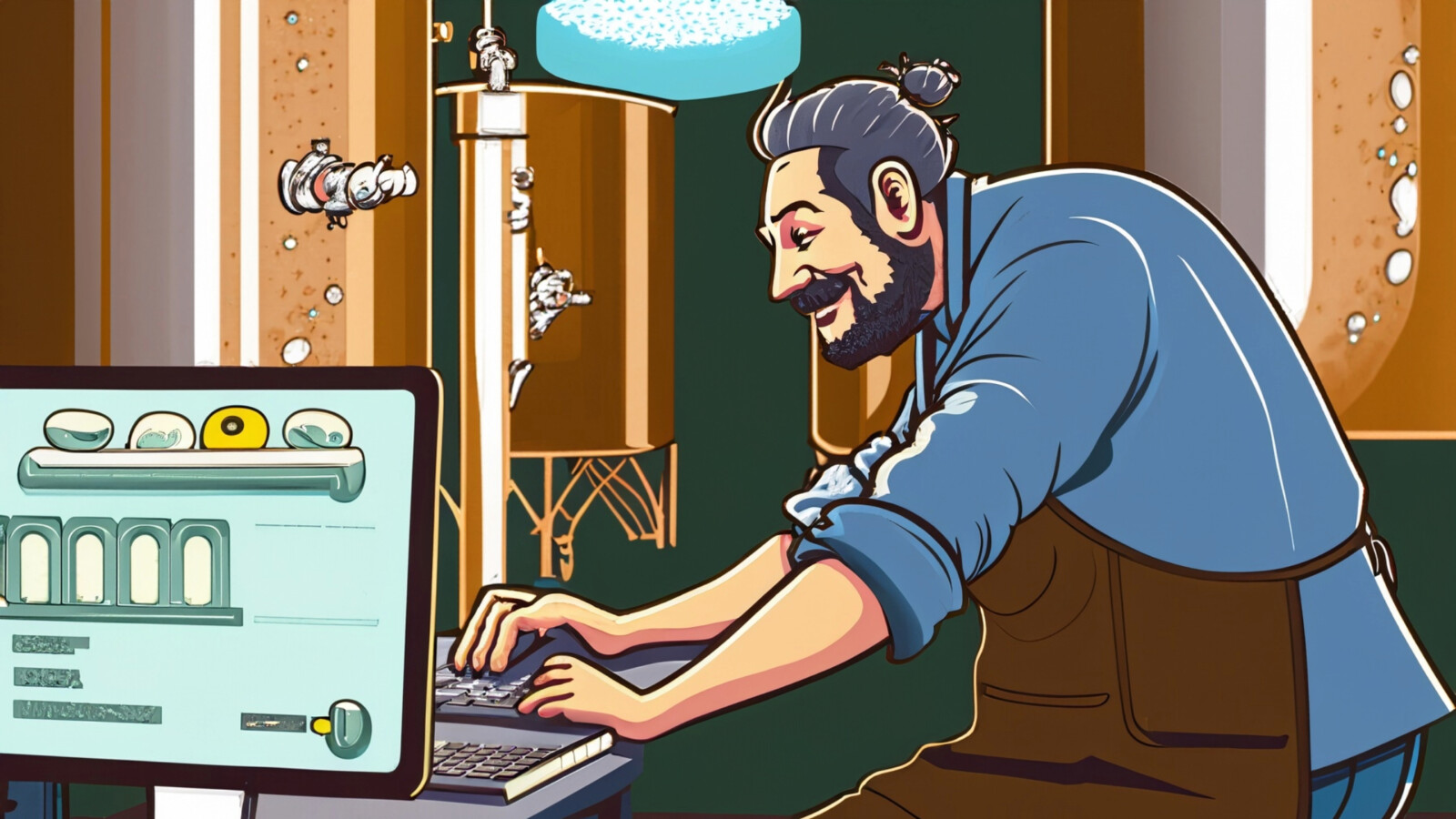Human beings have dreamt of artificial intelligence (AI) for at least the better part of a century. Scientists, mathematicians, and philosophers imagined how machines and eventually computers and software could develop non-human intelligence to perform everything from basic to complicated tasks. The early thinkers probably never considered that brewers would one day use AI to create beer recipes.
The academic, commercial, and public discussions of AI largely existed in the theoretical until the the release of ChatGPT, a large language model-based chatbot developed by OpenAI and released on November 30, 2022.
The basic and familiar chatbot model, not radically different from a Google search bar, allows users to engage in conversation with the bot, asking a series of successive queries in order to gain information or achieve a task. Shortly after its release, beer professionals started playing around with ChatGPT and others to do everything from create a to-do list on how to open a brewery to label creation.
A few months after the release of ChatGPT, brewers were already using it to develop recipes, generating wide headlines in newspapers and splashy television stories around the country.
In Pennsylvania, Second Sin Brewing used AI to create a recipe for a hazy IPA with Citra and Mosaic, while brewer Jake Howell created a competing hazy IPA recipe of his own. Together, the beers were called Jake Against (human generated) and The Machine (AI generated). Second Sin allowed customers to try both beers blind and vote. The winner: Jake Against. Score one for humanity.
The friendly competition generated a lot of local buzz, including a feature segment on the local CBS affiliate. Howell told CBS that he was impressed with the quality of the AI generated beer but he expressed no concern that AI would take his job. Consumers appear to have agreed. He also told CBS that brewers can use ChatGPT to “help get them in the ballpark” when it comes to recipe development.
Howell started by asking ChatGPT to “[w]rite me the best hazy IPA recipe in the world.” While this simple inquiry generates a basic hazy IPA recipe, including flaked oats and wheat, Mosaic and Citra hop additions, and suggest Vermont Ale yeast, a significant value in ChatGPT is the ability to ask the AI to refine the recipe. From this basic query,
It’s also important to note that using large language model chatbots, such as ChatGPT, comes with some built-in restrictions. The models are often not up to date, with a cutoff point sometimes years in the past. This may be less of an issue to a brewer than to an attorney, doctor, or researcher looking for the most recent information.
Also, to maximize the value of the chatbot, users need to learn how to refine their inquiries in a practice known as prompt engineering. After ChatGPT gives you the basic recipe, you can drill down and ask it to tweak the recipe in any way you want. Don’t have Citra on hand? Tell ChatGPT to use a different hop. Want to add lactose? Refine the query. Need to scale up the batch size? Update the prompt and ChatGPT refines the recipe in seconds. The chatbot even encourages you to do so, telling me to “[f]eel free to adjust quantities and ingredients to match your taste preferences.”
In the time since Second Sin first used ChatGPT to create its The Machine recipe, ChatGPT has updated its response to add additions of Simcoe, suggest maybe using London Ale III yeast or specific yeast offerings from Wyeast and White Labs, and gives detailed directions on fermentation temperatures, dry hopping, packaging, and carbonating the beer.
In addition to recipe development, AI can also help your brewery with other parts of the business. While it is capable of helping automate tasks, create to-do lists, organize ingredients and other purchasing needs, it is particularly helpful in naming beers. As any beer professional knows, naming beers is a painful task.
Beyond having to come up with creative names for a few if not dozens of beers a year, you also have to make sure no one else is using them. The process often requires returning to the drawing board several times. ChatGPT is a creative force that even tells you it enjoys coming up with “unique and catchy beer names.” As with all chatbot interactions, the more you refine your queries, the better tailored the results will be to your needs.
Chatbots can also help you write copy for your website or social media posts. Through prompt engineering, you can tell the chatbot to write in a certain style, ranging from formal to the voice of a famous writer or public figure. This can help automate tasks that many brewery professionals don’t have time or interest in performing, all in seconds.
With all of this said, it’s important to keep in mind that chatbots are hardly infallible. They are prone to getting things wrong, have trouble with simple math skills, and occasionally even make things up, called ‘hallucinating.’ Make sure to perform your own due diligence, whether in recipe development or in checking beer names for availability.
